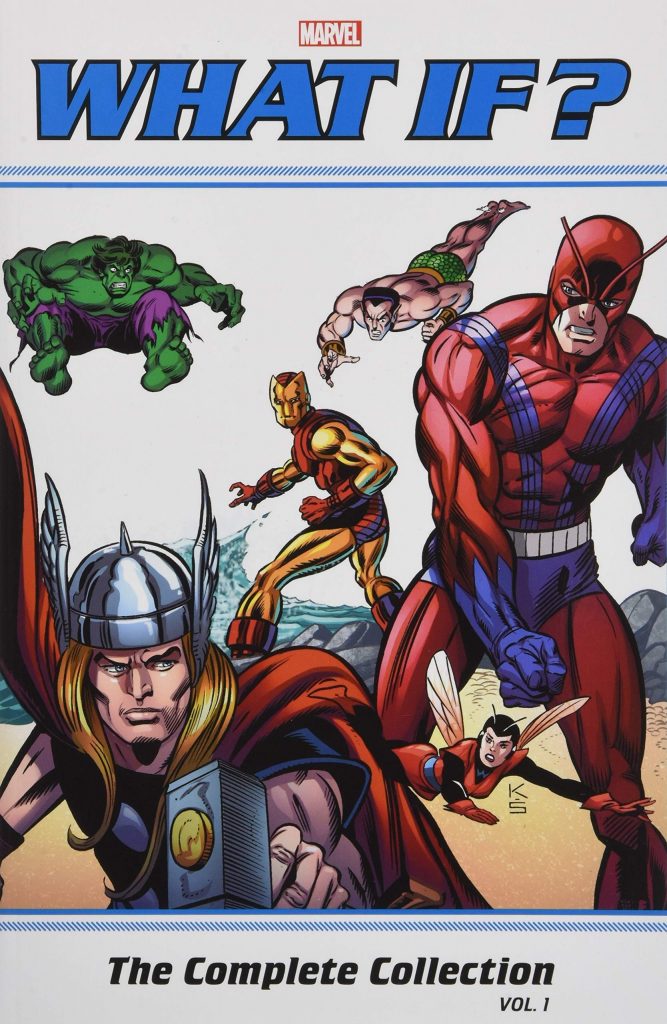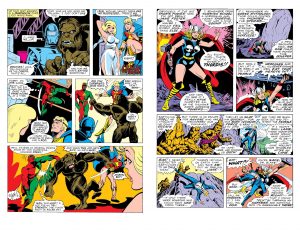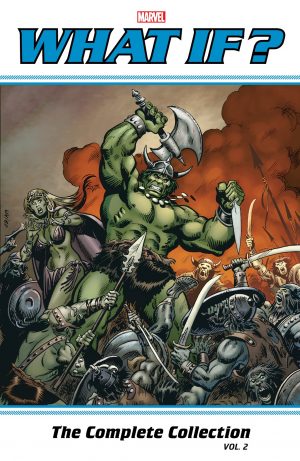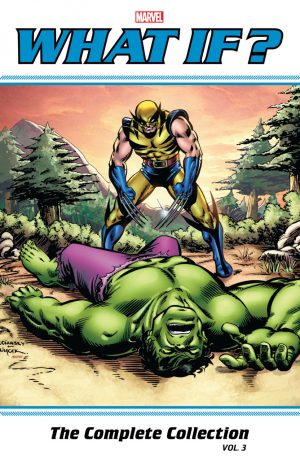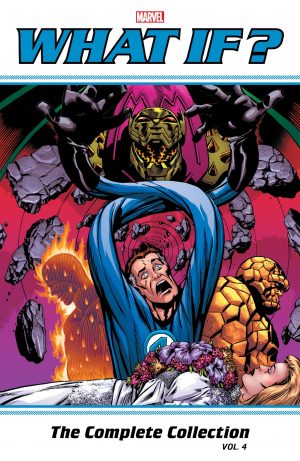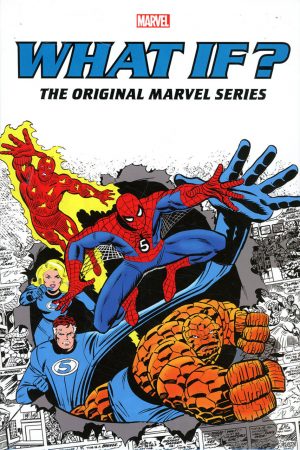Review by Frank Plowright
In 1977 Marvel was very sure of a fanbase doting on continuity that then stretched back just over fifteen years. Roy Thomas’ idea of producing a series of stories where a key element of that continuity changed was sound, offering alternative versions of Marvel’s history where events played out differently. Another inspiration was having the stories narrated by the Watcher, the solitary alien being usually charged with observing events on Earth. He’s also able to peek into alternate universes, hence these stories.
Unfortunately, when it came to it, Thomas was too busy with other projects to write any more than three of the dozen stories presented here. As explained in the letters pages also included, finding Marvel regulars able to commit was problematic, an almost running joke being a Conan story that’s constantly promised and constantly pushed back. It leads off Vol. 2. Of Marvel’s top artists of the time only Sal Buscema, Gil Kane and Jack Kirby are represented, only with a single story each. Instead the recreations of familiar scenes and what’s extrapolated from them are drawn by the likes of Alan Kupperberg (sample art left) and Rick Hoberg (sample right), who with the best will in the world aren’t on the same quality level.
Others being unavailable means most stories are written by Don Glut, then new to Marvel. That his ideas aren’t inherently poor is proved by how many have subsequently been well received when used by other writers as part of Marvel’s mainstream continuity. We have seen the 1950s Avengers, the world knows Matt Murdock is blind, and Spider-Man has joined a version of the Fantastic Four. Here, though, the execution diminishes the concepts. Jason Aaron produced memorable stories featuring Jane Foster as Thor, but Glut’s version is eventually supplanted by Don Blake anyway, and settles for the second prize of marrying Odin.
There is at least some energy to Jack Kirby’s reworking of the Fantastic Four in a version where Marvel’s early 1960s staff acquire the FF’s super powers, but it stands out not because it’s classic Kirby, but because it’s so much better than Hoberg and Kupperberg recycling classic Kirby. Also hitting the mark is Scott Shaw’s cartoon version of Man-Spider, where a human bites a spider to give him powers. The best story, though, is Thomas using the venue to tie up some ‘real’ Marvel continuity, explaining how Marvel published Captain America after World War II, when in the 1960s it was explained he was frozen in ice during the dying days of the war in Europe. There’s pathos and tragedy in a story about the Invaders pencilled by Frank Robbins, whose energetic cartooning wasn’t well received in the 1970s, but is definitely worth another look.
Overall, though, this first volume is only classic in the sense that it’s old. Mediocrity prevails.
If you’re a real sucker for punishment, you can pick up the same stories in the What If? The Original Marvel Series, and they were previously available in slimmer collections titled What If? Classic, this combining Vol. 1 and Vol. 2.
